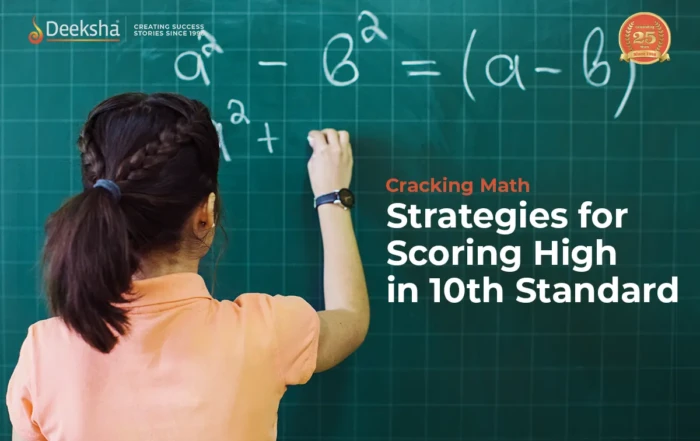Mirrors are smooth, highly reflective surfaces that bounce back light according to the laws of reflection. They form images by reflecting light, and the characteristics of the images depend on the type of mirror and the position of the object relative to it. In Class 10 CBSE Physics, understanding mirrors is essential, particularly in the context of light and reflection.
Key Terms Related to Mirrors
- Incident Ray: A light ray that strikes the mirror’s surface.
- Reflected Ray: The ray that bounces off the mirror’s surface.
- Normal Ray: A line perpendicular to the mirror at the point of incidence.
- Refracted Ray: A ray that passes into a different medium, bending at the interface.
- Angle of Incidence: The angle between the incident ray and the normal.
- Angle of Reflection: The angle between the reflected ray and the normal.
- Angle of Refraction: The angle alteration of the ray as it passes into another medium.
Types of Mirrors
| Types of Mirror | Description | Image Characteristics | Applications |
| Plane Mirror | A flat, reflective surface. | – Forms a virtual, upright, and laterally inverted image. – The image size is equal to the object size. | – Personal grooming (e.g., household mirrors). – Used in periscopes and kaleidoscopes for reflection and symmetry. |
| Concave Mirror | The reflective surface is curved inward, resembling the inside of a sphere. | – Image can be real or virtual depending on object distance. – Can form magnified or diminished images. | – Used in makeup mirrors to magnify reflections. – Found in headlights to focus light. – Used in telescopes. |
| Convex Mirror | The reflective surface bulges outward, causing light rays to diverge. | – Always forms a virtual, upright, and diminished image. | – Commonly used in vehicle rearview mirrors for a wider field of view. – Security mirrors in stores and parking lots. |
| Spherical Mirrors | Mirrors that are part of a sphere’s surface, either concave or convex. | – Concave mirrors form real or virtual images based on the object’s position. – Convex mirrors always form virtual images. | – Used in satellite dishes and solar cookers. – Convex mirrors in road safety mirrors to enhance visibility at curves. |
Laws of Reflection
The behavior of light when it strikes a mirror is governed by two basic laws of reflection:
- Angle of incidence = Angle of reflection: The angle at which light hits the mirror is the same as the angle at which it reflects.
- The incident ray, the reflected ray, and the normal lie in the same plane.
These laws apply to both plane and spherical mirrors (concave and convex) and are essential in understanding image formation.
Image Formation in Spherical Mirrors
In spherical mirrors (concave and convex), image formation depends on the position of the object relative to the focal point () and the center of curvature (
).
Concave Mirror Image Formation:
- Object at infinity: Image is real, inverted, and highly diminished at the focal point.
- Object beyond
: Image is real, inverted, and diminished between
and
.
- Object at
: Image is real, inverted, and the same size as the object at
.
- Object between
and
: Image is real, inverted, and magnified beyond
.
- Object at
: No image is formed as the reflected rays are parallel.
- Object between
and the pole: Image is virtual, upright, and magnified behind the mirror.
Convex Mirror Image Formation:
- Object at infinity: A virtual, upright, and diminished image is formed at
behind the mirror.
- Object at any finite distance: A virtual, upright, and diminished image is formed between
and the pole.
- Object at infinity: A virtual, upright, and diminished image is formed at
Mirror Formula
For spherical mirrors, the relationship between the object distance (), image distance (
), and focal length (
) is given by the mirror formula:
: Focal length
: Image distance
: Object distance

Magnification () is also an important aspect of image formation and can be calculated as:
: Height of the image
: Height of the object
Applications of Mirrors
- Plane Mirrors: Used in everyday life for personal grooming, in periscopes for submarines, and kaleidoscopes for visual effects.
- Concave Mirrors: Used in makeup mirrors, headlights, telescopes, and solar cookers for magnifying and focusing light.
- Convex Mirrors: Used in rearview mirrors of vehicles and in security mirrors at stores, parking lots, and streets for a wide field of view.
FAQs
Periscopes use a system of plane mirrors set at precise angles that allow light to enter from one end, reflect twice, and exit from the other end, enabling views over obstacles or from hidden positions.
Yes, when the object is placed between the focal point and the mirror, concave mirrors produce virtual, erect, and magnified images.
Mirrors actually do not reverse images left to right; they reverse front to back. This common misconception arises because we interpret our reflection as another person facing us.
Lateral inversion refers to the phenomenon where the left and right sides of an object are reversed in the image. This is a common property of plane mirrors and explains why words appear backward when viewed in a mirror.
The mirror formula is , where
is the focal length,
is the image distance, and
is the object distance. It is used to calculate the position and nature of the image formed by concave and convex mirrors.
Convex mirrors are used in vehicle rearview mirrors to provide a wider field of view, and they are also installed in stores and at intersections for security and safety purposes.
A real image is formed when light rays actually meet after reflection or refraction. It can be projected onto a screen and is inverted. A virtual image is formed when light rays appear to diverge from a point behind the mirror; it cannot be projected onto a screen and is always upright.
Concave mirrors can focus light rays to form real images when the object is beyond the focal point. However, convex mirrors cause light rays to diverge, so they always form virtual images behind the mirror, making them useful for a wider field of view.
Related Topics
- Factors On Which The Resistance Of A Conductor Depends
- Concave Mirrors and Convex Mirrors
- Compound Microscope
- Acceleration
- Circuit Diagram
- Electric Power
- Refraction Of Light
- Atmospheric Refraction
- The Human Eye And The Colourful World
- Spherical Mirrors
- Force
- Energy
- Wheatstone Bridge
- Magnetic Field Due To A Current – Carrying Conductor
- Work, Energy and Power











Get Social